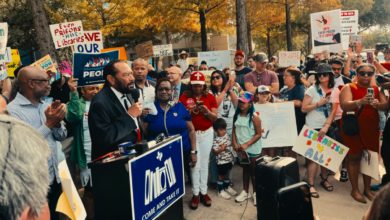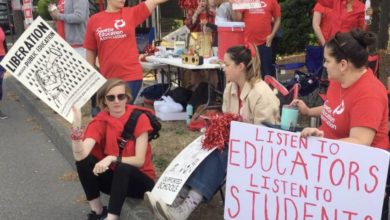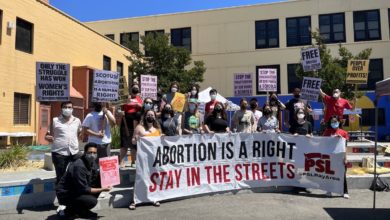There is a growing crisis in the U.S. public education system. It is marked by failing grades, an increasing turnover rate of teachers, the acceleration of segregation, and the increasing number of students and workers living in poverty in the “wealthiest country” in the industrialized world.
A recent article in the San Francisco Chronicle highlighted what many already know to be true—the public education
 |
According to the California Department of Education, only one in seven Latinos graduate from high school after four years and complete the courses required to enroll in a four-year college. That means around 85 percent do not. Statistics for African American students in California are similar.
Blacks and Latinos make up 56 percent of California’s students.
Every year, San Francisco spends more than $7 million hiring and training new teachers. This is because 16 percent of the city’s teachers leave their jobs yearly.
Why the high attrition rate? This is a national trend. Teachers say they are not getting the support they require—not enough funding, their classes are too big, they have to teach to meet stringent testing requirements, and so on.
At San Leandro High school, a predominantly working-class Bay Area school, six guidance counselors are assigned to 2,500 students. The counselors’ roles are to help students prepare for college.
But this effort is largely not individualized to each student’s needs, nor can it be. Each counselor is responsible for almost 420 students. Wanda Armstrong, a counselor at San Leandro high, said, “Kids are drowning. Their issues are far beyond school.”
The issues are similar to those faced by tens of millions each day in this country, such as paying for rent and food.
Education as a commodity
Given the obvious benefits of education, why is the U.S. public education system handled so poorly?
Public education must be viewed as part of the economic system under which we live. Capitalism forces public education to fulfill a certain role in society—mainly, training students to be workers.
The character of the educational system in the United States has changed according to shifts in the economy and the changing needs of the ruling class.
The first system of public education in the United States in the mid-1800s was a network of common schools that had as its primary purpose “the socialization of immigrants into American life and culture.” The schools served to prepare these new workers to enter the workforce and assimilate into the “dominant” culture, ruled by the bourgeoisie.
The predecessor to the modern-day school, the factory school, resulted from the shift of the U.S. economy from agrarian to industrial in the early 1900s.
The new type of school, which was compulsory, was funded partly by property taxes and partly by industrial “philanthropists,” like the Rockefellers. The aim of the schools was to inculcate workers arriving from rural areas with the discipline and work habits needed for the factory environment.
Serious government investment in public higher education didn’t begin until after World War II. It coincided with the emergence of the United States as a world superpower and the growing need for more skilled workers. This effort was accelerated by the economic and technological competition with the socialist camp.
Today’s trend toward de-funding and privatizing public education reflects another shift in the U.S. economy. Over the past 30 years, there has been a major shift from relatively skilled, higher-paying manufacturing jobs toward low-skill, low-paying service sector jobs.
The increase in lower-skill jobs means a lesser need on the part of the employers for the skills that college and university education provides. Preparing students for college became less important.
The changed needs of the ruling class can be seen in the contrast between education and prison funding.
Between 1980 and 2000, prison spending by state governments increased 189 percent, while education spending increased only 32 percent. By 2012, California is projected to spend $100 million more on prisons than on education.
While the corporate ruling class has its own aims for public education, the working-class movement has always fought for a separate vision: education as a tool for liberation.
This democratic vision of education has inspired social struggles for increased access to the knowledge produced by society.





